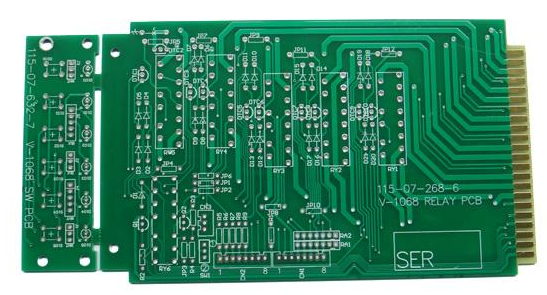The six factors that should be considered when passing the PCB schematic to the layout
When transferring a PCB schematic to the layout design, there are several key considerations that can help ensure a smooth and error-free process. All the examples provided were created using the MultiSim design environment, but these principles apply to any EDA tool you may be using.
The initial transfer of the schematic to the layout involves passing device information, netlist, layout data, and trace width settings through the netlist file. This is a critical step that sets the foundation for the entire layout process.
Here are some recommended steps to follow during the layout phase:
1. Set the grid and units appropriately. For finer control over component placement and trace routing, consider setting the device grid, copper grid, via grid, and SMD grid to 1 mil. This allows for more precise design work.
2. Define the board outline, including the blank area and via settings. Some PCB manufacturers have specific recommendations for blind or buried vias, so it's important to check their guidelines before proceeding.
3. Configure pad and via parameters based on the manufacturer’s capabilities. Most modern PCB manufacturers support smaller vias with a hole size of 10 mils and a pad diameter of 20 mils.
4. Set up design rules according to your project requirements. These rules will guide the layout process and help prevent errors during routing and placement.
5. Create custom shortcuts for frequently used layers to streamline your workflow when switching between layers or creating vias during routing.

During the schematic transfer, one common issue is incorrect or missing package assignments. If a component in the schematic is not properly encapsulated, an alert will appear indicating that the virtual component could not be exported. In such cases, the component might be omitted from the layout entirely, leading to potential design issues later on.
If the package is passed but does not match the expected shape, a mismatch warning will also be generated. It's essential to correct these issues in the schematic by either assigning the correct package or creating a new one. Once fixed, perform a forward annotation to update the layout with the latest design data.
Annotation is the process of synchronizing design changes between the schematic and the layout. This includes both forward annotation (from schematic to layout) and backward annotation (from layout to schematic). Proper use of these tools ensures that all design updates are accurately reflected across both environments.
Before performing any major annotation steps, always back up the current versions of both the schematic and layout files. This protects your work and prevents data loss in case something goes wrong during the synchronization process.
Avoid making changes in both the schematic and layout simultaneously. Instead, make all modifications in one area—either the schematic or the layout—and then use the appropriate annotation method to update the other side. This helps maintain consistency and reduces the risk of conflicts.
Device renumbering is an important part of PCB design, especially for assembly and testing. Components should be numbered in a logical order, typically from top to bottom and left to right on the top layer. This makes it easier to locate and identify components during production and troubleshooting.
Last-minute changes to devices or netlists can be risky, but sometimes necessary due to unforeseen issues or late-stage design errors. If you need to add or modify a component, do so in the schematic first, then forward annotate the changes to the layout. For example, if you add a pull-up resistor after the layout has started, it will appear as an unplaced component outside the board’s boundary. You can then move it into place and route the connections normally.
Backward annotation and reference label updates work well together. For instance, if you renumber components in the layout, those changes can be reflected back in the schematic through backward annotation. This keeps the design consistent and up-to-date.
Another useful feature is the 'highlight selection' function, which allows you to select a component or trace in the layout and view its corresponding position in the schematic. This is particularly helpful when matching bypass capacitors with their associated ICs. Conversely, you can also highlight a component in the schematic and locate it in the layout, making navigation between the two environments much easier.
60Hz Diesel Generator assembly by diesel engine, alternator, radiator, controller, base frame;
. World Famous diesel engine brand: Cummins, Perkins, MTU, Kubota, Yuchai, Mitsubishi, Deutz, Doosan, MWM, GE, CRRC
. World famous AC alternator brand: Stamford, Leroy Somer, Mecc Alte, Marathon, Faraday, SWT
. World famous genset controller brand: Deepsea, ComAp, Deif, SmartGen,
. Good Quality Cooling Radiator
. Start Battery system
. 60Hz, 1800rpm
. Low or middle speed: 1200rpm, 900rpm, 720rpm, 600rpm, 500rpm
60Hz Genset,60Hz Generator,60Hz Generator Set,60Hz Diesel Generator
Guangdong Superwatt Power Equipment Co., Ltd , https://www.swtgenset.com